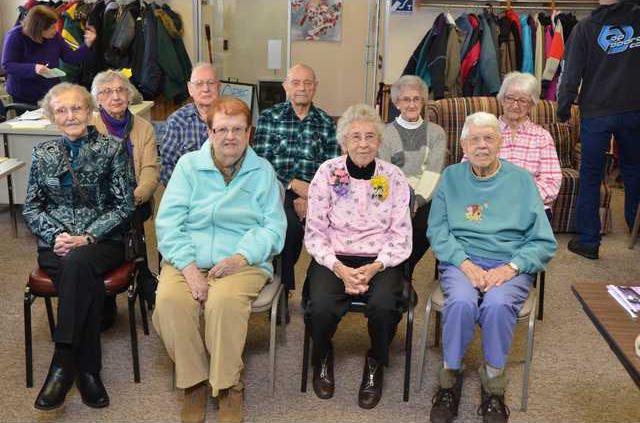How old is a “senior citizen”?
Some would argue 60. Others would claim the early retirement age of 62, or the original Social Security retirement age of 65. Anyone born since 1960 has a retirement age of 60.
The Platteville Senior Center is endeavoring to extend its programs to people who start receiving materials from the American Association of Retired Persons.
“Our mission is to provide a warm and relaxing place away from home for people over 50,” said Connie Steinhoff, the Senior Center’s director and only full-time employee. “A lot of people who come here are in transitions in their lives — they’ve lost a spouse, they’ve lost siblings, their children have moved away. It’s a place to connect, and that’s so important. That allows them to stay in Platteville and contribute to the community.
The goal to extend the center’s programs beyond traditional “senior-citizen” age prompted Steinhoff to request an additional staff position from the Platteville Common Council to be added to Steinhoff and her two part-time employees. The council approved her request as a limited-term position through the rest of this year, with the position likely to be considered as part of the city’s 2014 budget deliberations.
“I’ve been blessed to work with the best people here and the best staff,” said Steinhoff, the Senior Center’s director since 2007. “The people who come here, it’s a really important place for them to come here.”
To meet the population in their 50s, the Senior Center is now open Thursday nights, tied to the Music in the Park series, and Saturdays from 8 a.m. to 1 p.m., tied to the Platteville Farmers Market.
“They have different interests,” said Steinhoff of the 50-something set. “A lot of seniors don’t have interest in playing cards, and that’s a lot of what we do in the daytime. So we’re open for events on nights and weekends. One of the objectives is to introduce the Senior Center to younger seniors, but also to expand our programs to all seniors.”
The Platteville Senior Center is the only senior-citizen facility located in the same building as that city’s senior meal site. The meal site offers dinners with an estimated cost of $9.25 for a suggested donation of $3.50.
“It’s a great partnership,” said Steinhoff. “It’s like pumpkin pie and whipped cream. It’s great to have senior citizens utilizing services in one place.”
The City of Platteville funds the center’s building and utility expenses, as well as its vehicles, as part of its $65,000 annual budget. The center’s bus does triple duty over the lunch hour, delivering people to the meal site, delivering around 30 meals to homes, and then delivering patrons back to their homes.
Senior Center programming includes speakers and educational opportunities, including a nutritionist who puts on monthly programs, plus music, cards, bingo, exercise, and trips. A Milwaukee Brewers tailgate party and Green Bay Packers party are on the schedule. The center has a computer that can be checked out, iPads, exercise equipment and a Wii. Around 150 to 175 people visit each week.
“We’re a real positive place,” said Steinhoff. “For as many people as come here you’d think there’d be conflict, but people who come here and the staff, we’re well matched.”
The Senior Center’s annual Senior Picnic will be at the United Methodist Church in Platteville Wednesday, Aug. 28 from 4 to 8 p.m. The picnic is moving from Legion Park to accommodate indoor and outdoor activities. Country Kitchen and Dairy Queen in Platteville is catering the picnic.









